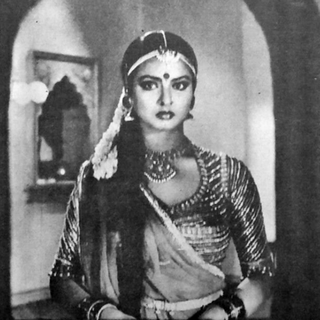
Can ‘Authentic’ Sex Scenes Ever Safeguard Actors’ Interests?
Actor Claire Foy recently noted filming the scene left her feeling exploited, but she waded through in the interest of art.

Recently, actor Claire Foy (people’s favorite fictional Queen from Netflix’s The Crown), spoke about feeling “exposed” and “exploited” while filming a sex scene for the big screen. The scene in question involves playing the Duchess of Argyll, the subject of an infamous 1963 divorce case.The Duchess’ husband had alleged she had sex with 88 different men and presented a photograph in the court showingher indulging in oral sex with another man. So, the cinematic adaptation, titled A Very British Scandal, understandably has a lot of nudity.
But Foy noted she was discomfited by the filming process. “It’s grim – it’s the grimmest thing you can do. You feel exposed. Everyone can make you try to not feel that way but it’s, unfortunately, the reality.” Foy said. “It’s a really hard line because basically you do feel exploited when you are a woman and you are having to perform fake sex on screen. You can’t help but feel exploited.”
Every art aspires to carry a degree of reality, of authenticity, which distinguishes itself from others. The discreet world of sex scenes has straddled this line — trying to showcase natural depictions of intimacy. But in the pursuit of authenticity, do cinematic portrayals of sex scenes have an unfettered license to violate individual space?
The short answer is: no,of course. The longer answer engages with the politics of nudity. “Interrogating nudity in film is like pulling silks from a magician’s sleeve — start with one inquiry, end up with a dozen other considerations,” writer Nneka McGuire noted in The Lily last year.
Some considerations are of note here: Who is directing/writing the scene? What purpose does the scene serve? How much control does the individual have? “Those are the questions to ask. And they often don’t have simple answers.”
The 2016 movie Last Tango in Movie illustrates the first point of contention starkly. Filmmaker Bernardo Bertolucci faced fierce criticism for a scene where he engineered a situation to show “real humiliation” from rape on screen. In the infamous scene, Marlon Brando’s character, Paul, rapes Maria Schneider’s character, Jeanne, by using butter as a lubricant to have anal sex. But the scene wasn’t in the original script. Bertolucci has acknowledged (and expressed no remorse) he didn’t tell Schneider about the scene beforehand on purpose. “I wanted her reaction as a girl, not as an actress,” he said. “I wanted her to react humiliated.” Because as a filmmaker, he claimed he had the license to be “completely free.”
Take a pause to process what this really means. This is a scene clearly meant to be violent and disturbing, which involves Paul hitting Jeanne and penetrating her. “I was so angry,” she said. “I felt humiliated and to be honest, I felt a little raped, both by Marlon and by Bertolucci.” The line between feeling and acting was blurred — not by Schneider — but by a male figure who felt entitled to blur it. The filmmaker’s vision trumping the actors’ agency is, then, not an artistic conflict, but a sexist and patriarchal assertion of power.
Research shows female nudity is more commonplace in comparison to male nude depictions. Take this 2018 analysis, for instance, which looked at 1,100 popular films to reach an interesting statistic. 25.4% of women had roles with some nudity; for men, it amounted to 9.6%.
Some hold a cheeky defense to justify this — that male genitalia needs more cosmetic edits and females generally need to show more to truly be naked. But by and large, “women’s bodies have been put on display for men’s pleasure,” Martha Lauzen, executive director of the Center for the Study of Women in Television and Film at San Diego State University, told The Lily. Lauzen authored a report that found men accounted for 87% of directors and 81% of writers for the 250 highest-grossing American films in 2019. This trend may be similar for other time periods and geographical locations.
Related on The Swaddle:
Bollywood Is Finally Shooting Overt Sex Scenes. How Can the Process Be Ethical, Safe?
The other consideration is the cultural value sex scenes serve. They can be categorized as art in a certain sense of the term. Nudity in itself has struggled to find rightful depiction. Movies and TV very liberally made use of symbols (think intertwined flowers, clothes lying on the floor, a sexually suggestive shot of two feet mingling). Hindi cinema, for instance, is replete with “symbolic sex,” but the cultural anxiety has always prohibited any realistic depiction, calling it “promiscuous” and “gratifying.”
Notably, the sexual state of affairs over the last decades has progressed. Take Foy’s answer for instance, where she explains why she felt compelled to do the scene herself. “But my thing was that I felt very strongly that it had to be in it, but I wanted it to be female. I did not want it to be that sort of awful climactic sexual experience you often see on the cinema screen.” She wanted it to be real and true to the story, and not a performance.
Critics have made an argument for the need to depict authentic sex; it challenges preconceived anxieties about sexual desire, humanizes sex, informs people, even breaks the male-female binary. Adequate sexual desire representation helps to frame conversations around gender justice.
But what happens when the desire to produce art violates personal consent? This is pertinent to note when a culture collectively fails to understand the nuances of consent or what it means to respect a person’s dignity. If female nudity doesn’t achieve the cultural purpose it was meant for, it may become a vehicle to weaponize people’s idea of consent and space.
“You need to make sure you’re having the right conversations [with sex scenes]. You need to make sure you’re establishing boundaries, not violating people’s privacy or personal space,” director Shakun Batra told The Swaddle earlier.
That is perhaps why intimacy coordinators rose to fame — these are professionals hired specifically for the purpose of directing sexual scenes. A coordinator remembers asking these questions: “Do you feel comfortable with a hand here or here, or kissing here or here?” These helped establish boundaries. In India, the reliance is slow but poised to grow as cinema is finally tilting towards overt sex scenes. “The training involves everything from effective communication and trauma handling to contractual reflection of consent on set. It includes both how a production house can safeguard itself when in disagreement with an actor, and how an actor can protect themselves at work,” Rajvi Desai wrote for The Swaddle, explaining the safety nets that could be found along the way.
Indubitably, sex scenes on screen have immense cultural value. But the art versus real-life debate must grapple with other considerations. The question that will continue to unwind is: what legacy do authentic sex scenes leave behind?
Saumya Kalia is an Associate Editor at The Swaddle. Her journalism and writing explore issues of social justice, digital sub-cultures, media ecosystem, literature, and memory as they cut across socio-cultural periods. You can reach her at @Saumya_Kalia.
Related


‘Decoupled’ Tried to Satirize ‘Toxic’ Societal Norms, Ended Up Normalizing Them
